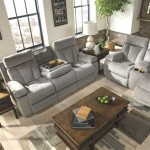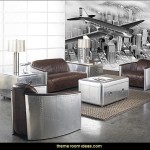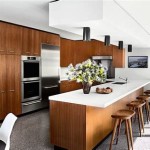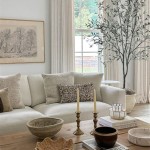Interior Decoration Ideas for the Living Room: A Comprehensive Guide
The living room serves as a centralized hub for relaxation, entertainment, and social interaction within a dwelling. Crafting an aesthetically pleasing and functionally efficient living room necessitates thoughtful planning and the implementation of well-considered interior decoration ideas. This article provides a comprehensive exploration of various elements and strategies to enhance the living room environment.
Defining the Functional Zones
Prior to initiating any decorative endeavors, it is essential to delineate the distinct functional zones within the living room. These zones might include a seating area for socializing, a media center for entertainment, a reading nook for quiet contemplation, or even a workspace for home office activities. Clearly defining these zones will inform furniture placement, lighting schemes, and accessory selections.
The size and configuration of the living room will dictate the number and types of zones that can be effectively incorporated. In smaller spaces, a multi-functional approach may be necessary, such as utilizing a coffee table with storage or a sofa bed to maximize utility. Larger living rooms offer greater flexibility and allow for more clearly demarcated spaces.
Consider the typical activities that occur in the living room when defining zones. If the primary function is television viewing, a media center with comfortable seating arranged around the screen is paramount. If the space is primarily used for conversation and socializing, a seating arrangement that encourages interaction is more appropriate.
Once the zones are defined, consider the flow of traffic between them. Pathways should be clear and unobstructed to ensure ease of movement and prevent the space from feeling cramped or cluttered. Strategic furniture placement plays a crucial role in optimizing circulation within the living room.
Selecting a Cohesive Color Palette
Color plays a pivotal role in shaping the mood and atmosphere of the living room. A carefully selected color palette can create a sense of harmony and cohesion, while a poorly chosen palette can result in a disjointed and unappealing space. The chosen palette should reflect the homeowner's personal preferences while also considering the overall style and aesthetic of the dwelling.
Begin by identifying a dominant color, which will serve as the foundation for the palette. This color should be one that the homeowner finds visually appealing and that complements the existing architectural features of the room. Neutral colors, such as beige, gray, or white, are often used as dominant colors due to their versatility and ability to blend seamlessly with a wide range of accent colors.
Next, select two to three accent colors to complement the dominant color. These accent colors can be incorporated through upholstery, accessories, artwork, and paint. Consider using a color wheel to identify complementary or analogous colors that will create a visually pleasing contrast or harmony. Complementary colors are located opposite each other on the color wheel and offer a vibrant contrast, while analogous colors are located next to each other and create a more subtle and harmonious effect.
The use of texture can also add depth and interest to the color palette. Incorporate different textures through fabrics, finishes, and materials to create a more tactile and visually stimulating environment. For instance, a smooth leather sofa can be paired with textured throw pillows and a woven rug to create a balanced and inviting space.
Implementing Effective Lighting Strategies
Lighting is a crucial element of living room design, influencing both the functionality and the ambiance of the space. A well-lit living room is inviting and comfortable, while a poorly lit room can feel gloomy and unwelcoming. A multi-layered lighting scheme should be implemented, incorporating ambient, task, and accent lighting to provide both general illumination and focused light for specific activities.
Ambient lighting provides overall illumination to the room and is typically achieved through ceiling fixtures, such as chandeliers, pendant lights, or recessed lighting. This layer of lighting should be sufficient to allow for safe and comfortable movement throughout the space. Dimmers can be installed on ambient lighting fixtures to allow for adjustable levels of illumination.
Task lighting provides focused light for specific tasks, such as reading, writing, or crafting. Floor lamps, table lamps, and adjustable reading lights are commonly used for task lighting. The positioning of task lighting should be carefully considered to ensure that it provides adequate illumination without creating glare or shadows.
Accent lighting is used to highlight specific features of the room, such as artwork, architectural details, or decorative objects. Track lighting, spotlights, and wall sconces are commonly used for accent lighting. The placement and intensity of accent lighting should be carefully adjusted to create a visual hierarchy and draw attention to the desired focal points.
Natural light should be maximized whenever possible. Windows should be kept clean and unobstructed to allow for ample sunlight to enter the room. Lightweight window treatments, such as sheer curtains or blinds, can be used to filter harsh sunlight and provide privacy without completely blocking the natural light.
Choosing Furniture for Functionality and Aesthetics
Furniture constitutes a significant component of the living room's design, providing both seating and storage solutions while also contributing to the overall aesthetic. Furniture selection should be guided by functionality, comfort, and visual appeal. The furniture pieces should be proportional to the size of the room and arranged in a manner that promotes conversation and ease of movement.
The sofa is typically the focal point of the living room and should be chosen carefully, considering factors such as size, style, and comfort. Measure the available space before purchasing a sofa to ensure that it will fit comfortably without overwhelming the room. Consider the style of the room when selecting a sofa. A modern living room may benefit from a sleek, minimalist sofa, while a traditional living room may call for a more ornate and upholstered piece.
Accent chairs provide additional seating and can be used to add visual interest to the room. Choose accent chairs that complement the sofa in terms of style and color. Consider incorporating chairs with different shapes and textures to create a more dynamic and eclectic look. Swivel chairs or armchairs with ottomans can provide added comfort and functionality.
Coffee tables serve as a central gathering point and provide a surface for drinks, snacks, and decorative objects. Choose a coffee table that is proportional to the size of the sofa and that complements the overall style of the room. Consider incorporating a coffee table with built-in storage to maximize functionality. Ottoman-style coffee tables can provide both a surface for drinks and a comfortable place to rest one's feet.
Storage solutions are essential for keeping the living room organized and clutter-free. Bookshelves, cabinets, and media consoles can provide ample storage space for books, electronics, and other belongings. Choose storage solutions that complement the overall style of the room and that blend seamlessly with the existing decor. Consider incorporating floating shelves or built-in storage units to maximize space and create a clean, streamlined look.
Incorporating Personal Touches and Accessories
Personal touches and accessories are essential for transforming a living room from a generic space into a personalized and inviting sanctuary. These elements reflect the homeowner's individual style and interests, adding character and warmth to the room. Artwork, photographs, decorative objects, and plants can all be used to create a unique and visually appealing space.
Artwork can serve as a focal point in the living room and can add color, texture, and visual interest. Choose artwork that reflects the homeowner's personal taste and that complements the overall style of the room. Consider creating a gallery wall with a collection of framed prints, photographs, and other artwork. The artwork should be hung at eye level and spaced evenly apart to create a cohesive and visually appealing display.
Photographs can add a personal touch to the living room and can help to create a sense of connection and nostalgia. Display framed photographs of family, friends, and memorable events. Consider creating a photo album or scrapbook to showcase a larger collection of photographs. Digital photo frames can also be used to display a rotating selection of images.
Decorative objects can add texture, color, and visual interest to the living room. Choose decorative objects that reflect the homeowner's personal style and interests. Consider incorporating vases, sculptures, candles, and other decorative items. Arrange decorative objects in groupings to create a visually appealing display. Avoid cluttering the room with too many decorative objects, as this can make the space feel overwhelming.
Plants can add life and vibrancy to the living room and can help to purify the air. Choose plants that are appropriate for the lighting conditions in the room. Consider incorporating a variety of plants with different shapes, sizes, and textures. Arrange plants in decorative pots or planters to complement the overall style of the room. Hanging plants can also add visual interest and can help to save space.
Rugs anchor the seating arrangement and add warmth and texture to the floor. The rug should be large enough to accommodate all of the front legs of the furniture in the seating area. Rugs can be used to define different zones within the living room. Choose a rug that complements the overall color palette and style of the room.
Throw pillows and blankets can add comfort and visual interest to the sofa and chairs. Choose throw pillows and blankets in a variety of colors, textures, and patterns. Arrange the throw pillows in a symmetrical or asymmetrical arrangement. A cozy throw blanket can add warmth and comfort on chilly evenings.
Window treatments, such as curtains, blinds, or shades, can provide privacy, control light, and add visual interest to the windows. Choose window treatments that complement the overall style of the room and that provide the desired level of privacy and light control. Consider layering different types of window treatments to create a more dynamic and visually appealing look.
By carefully considering these elements and implementing thoughtful interior decoration ideas, it is possible to transform any living room into a comfortable, stylish, and functional space that reflects the homeowner's personal preferences and lifestyle.

25 Living Room Interior Design Ideas Havenly Apartment Classic Furniture Styles

Living Room Decor Ideas For Your Home Design Cafe
:strip_icc()/cdn.cliqueinc.com__cache__posts__212361__-2030968-1483470364.700x0c-8571e60cad7b42a981ab29ae10b5c153-497b002f87af4747b2ab38b560e7c0fd.jpg?strip=all)
How To Decorate A Living Room 20 Ideas And Common Mistakes

Small Living Room Decorating Ideas Designcafe

Beautiful Living Rooms Designs Ideas 10 Unique And Easy Design For

Liven Up Your Living Room With These Interior Design Ideas Goodhomes Co In

77 Best Living Room Decor Ideas 2025 Unique

Modern And Luxurious Living Room Interior Design Ideas

10 Stunning Small Living Room Ideas To Maximize Space

Stunning Modern Living Room Interior Design Ideas In
Related Posts







